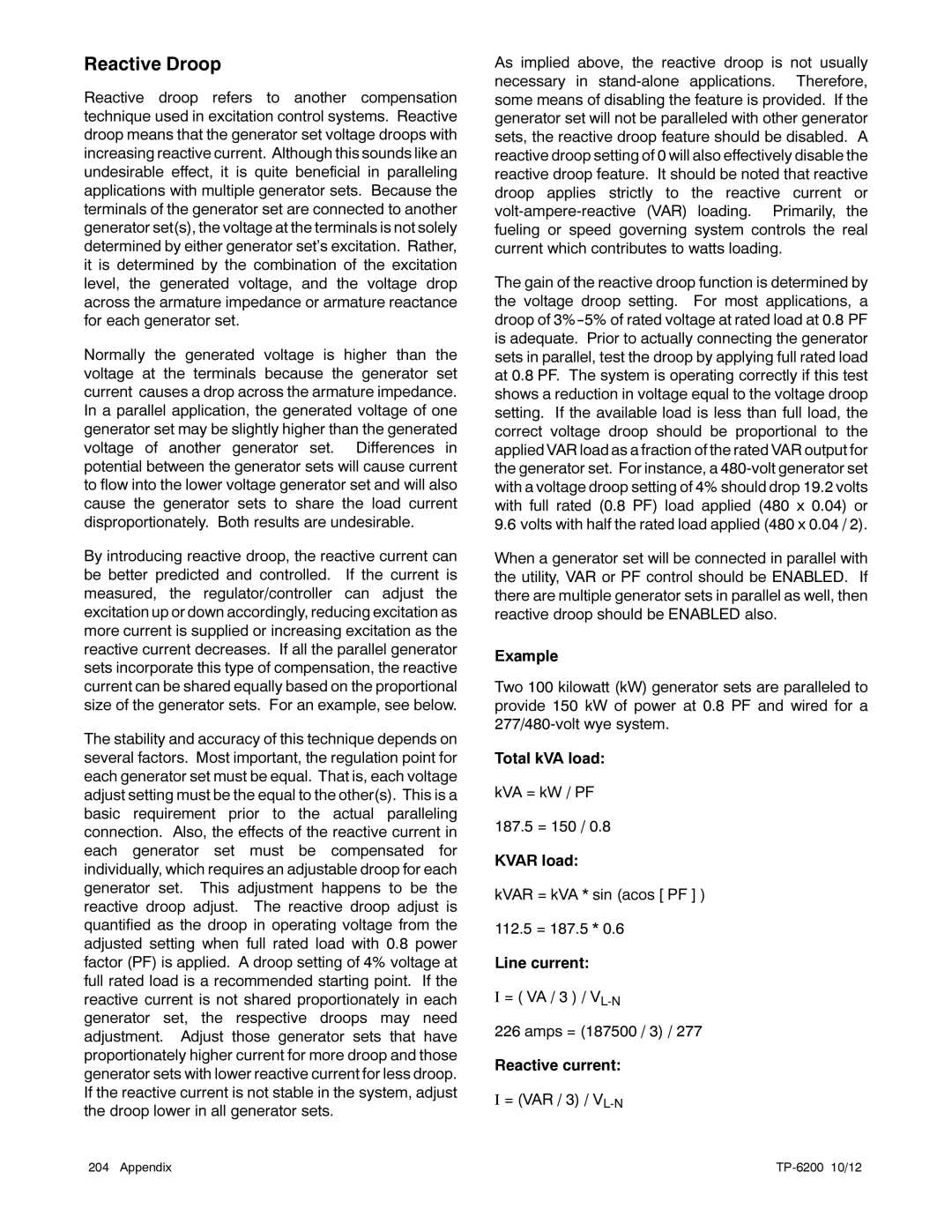Reactive Droop
Reactive droop refers to another compensation technique used in excitation control systems. Reactive droop means that the generator set voltage droops with increasing reactive current. Although this sounds like an undesirable effect, it is quite beneficial in paralleling applications with multiple generator sets. Because the terminals of the generator set are connected to another generator set(s), the voltage at the terminals is not solely determined by either generator set’s excitation. Rather, it is determined by the combination of the excitation level, the generated voltage, and the voltage drop across the armature impedance or armature reactance for each generator set.
Normally the generated voltage is higher than the voltage at the terminals because the generator set current causes a drop across the armature impedance. In a parallel application, the generated voltage of one generator set may be slightly higher than the generated voltage of another generator set. Differences in potential between the generator sets will cause current to flow into the lower voltage generator set and will also cause the generator sets to share the load current disproportionately. Both results are undesirable.
By introducing reactive droop, the reactive current can be better predicted and controlled. If the current is measured, the regulator/controller can adjust the excitation up or down accordingly, reducing excitation as more current is supplied or increasing excitation as the reactive current decreases. If all the parallel generator sets incorporate this type of compensation, the reactive current can be shared equally based on the proportional size of the generator sets. For an example, see below.
The stability and accuracy of this technique depends on several factors. Most important, the regulation point for each generator set must be equal. That is, each voltage adjust setting must be the equal to the other(s). This is a basic requirement prior to the actual paralleling connection. Also, the effects of the reactive current in each generator set must be compensated for individually, which requires an adjustable droop for each generator set. This adjustment happens to be the reactive droop adjust. The reactive droop adjust is quantified as the droop in operating voltage from the adjusted setting when full rated load with 0.8 power factor (PF) is applied. A droop setting of 4% voltage at full rated load is a recommended starting point. If the reactive current is not shared proportionately in each generator set, the respective droops may need adjustment. Adjust those generator sets that have proportionately higher current for more droop and those generator sets with lower reactive current for less droop. If the reactive current is not stable in the system, adjust the droop lower in all generator sets.
As implied above, the reactive droop is not usually necessary in
The gain of the reactive droop function is determined by the voltage droop setting. For most applications, a droop of
When a generator set will be connected in parallel with the utility, VAR or PF control should be ENABLED. If there are multiple generator sets in parallel as well, then reactive droop should be ENABLED also.
Example
Two 100 kilowatt (kW) generator sets are paralleled to provide 150 kW of power at 0.8 PF and wired for a
Total kVA load:
kVA = kW / PF
187.5 = 150 / 0.8
KVAR load:
kVAR = kVA * sin (acos [ PF ] )
112.5 = 187.5 * 0.6
Line current:
I = ( VA / 3 ) /
226 amps = (187500 / 3) / 277
Reactive current:
I = (VAR / 3) /
204 Appendix |
|
